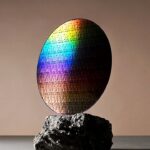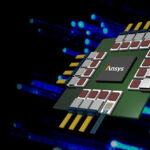ASIA ELECTRONICS INDUSTRYYOUR WINDOW TO SMART MANUFACTURING
Honda, IBM to Make Breakthrough IC Research for SDVs
Honda Motor Co., Ltd. (Honda) has signed a Memorandum of Understanding (MoU) with IBM. Specifically, outlining their intent to collaborate on the long-term joint research and development of next-generation computing technologies(1).
Accordingly, the collaboration aims to overcome challenges related to future software-defined vehicles (SDV). Particularly, in processing capability, power consumption, and design complexity.
Next-Generation Compute Technologies
The application of intelligence/AI technologies will wide accelerate in 2030 and beyond. Thus, creating new opportunities for the development of SDVs. Honda and IBM anticipate that SDVs will dramatically increase the design complexity, processing performance, and corresponding power consumption of semiconductors.

In order to solve anticipated challenges and realize highly competitive SDVs, it is critical to develop capabilities in the independent R&D of next-generation computing technologies.
Based on this understanding, the two companies began considering long-term joint research and development opportunities.
In particular, the MOU outlines areas of potential joint research of specialized semiconductor technologies such as brain-inspired computing(2) and chiplet technologies. The aim is to dramatically improve processing performance while, simultaneously, decreasing power consumption.
Meanwhile, hardware and software co-optimization is important to ensure high performance and fast time to market. To achieve such benefits and manage design complexity for future SDVs, the two companies also plan to explore open and flexible software solutions.
Through this collaboration, the two companies would strive to realize SDVs that feature the world’s top-level computing and power-saving performance.
Notes:
(1) Computing technology being developed to achieve both high processing performance and low power consumption in the 2030s and beyond.
(2) Computer architecture and algorithms that mimic the brain’s structure and function while optimizing for silicon.
15 May 2024




